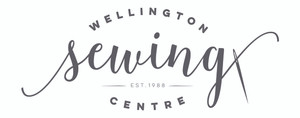Measurements
In the first series, Maria French demonstrates the art of measuring correctly the various parts of a female body so that dressmaking patterns can be checked against the measurements as an aid to choosing the best pattern size for each unique woman.
1. Introduction
My name is Maria French. I am a seamstress, and I teach sewing classes at the Wellington Sewing Centre.
2. What you should wear
Remember to wear clothes that are fitted, but not overly tight. Avoid jeans, shapewear, baggy sweaters and push up bras. Stick with T-shirts, leggings, light dresses etc.
3. Preparations
Tie a piece of elastic around your waist - this will automatically go to your smallest area and will help to keep your measurements consistent. Use a mirror to help make sure you are taking them from the right places.
4. Bust Measurement
Fullest area of your chest, usually over your nipples. Keep the tape measure parallel to the floor. Breathe in and release to relax, and look straight ahead.
5. Waist Measurement
Smallest area, often at the base of just under your ribcage. NOT around your belly button, that is the abdomen. Keep tape measure parallel to the floor. Breathe in and release to relax, and look straight ahead.
6. Hip Measurement
Fullest area, usually around your bum, not around your hipbones. Keep tape measure parallel to the floor. Tape measure should be firm but not tight.
7. Lengths
Take length measurements from your piece of elastic for waisted skirts and dresses. Start lower for trousers and skirts that sit lower down. Take this in front of a mirror while looking straight ahead and drop the tape measure until the end is at the desired height.Use this as a starting point and add some cms so you have room to adjust as necessary during fitting.
8. Nape to Waist
Good bodice length measurement. If you know that clothes tend to be too long or too short in the body, you will find this helpful. Otherwise you likely won’t need it as you are probably close enough to standard.From the back of your neck to waist - have someone else take this if possible.Use your piece of elastic to help finish at the right place, and start at the base of your neck/top of the spine.
9. Shoulder
Most people can happily use standard pattern shoulder measurements; you will probably already know if this will be helpful for you.Start at the base of the neck, and imagine a point where your shoulder and arm would form a point if we were made of straight lines as the finish.
